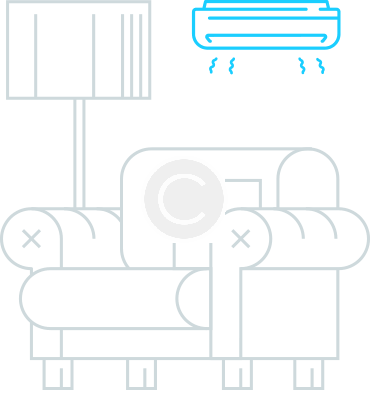Home automation has become very popular in the last decade. A Smart Home has the capability of monitoring and taking over the daily routine of running itself. Home security, lighting control, irrigation and entertainment systems can all be controlled at the push of a button. Modern systems have made control possible from within the home or remotely through the use of internet connected devices such as an iPad or a Tablet PC.
Climate control is one of the greatest benefits of this new technology. Climate control in the home is more than just adjusting the temperature. It means adjusting temperatures and even humidity levels for different areas or rooms in the home. Automated climate control is capable of doing all of this and saving money on the utility bill.
The savings are a major benefit of an automated climate control system. As an example, in the following scenario it’s a hot summer day. You decide to run a couple of errands and return home. You set the air conditioner on high so the house will be cool when you return. While running errands you bump into an old friend and spend some time catching up. You then remember you have to go to the market to purchase a few things and then get some gas for the car.
The 15 minute trip has turned into a 4 hour excursion and your air conditioner has been running full blast unnecessarily wasting energy awaiting your return. This scenario is typical of human habits and where climate control can have the greatest impact.
With an automated climate control system the air conditioner could be switched off after a certain time if no activity in the room is detected. The temperature could also be adjusted from a Smart Phone if you can’t make it back home in the intended period of time. Climate control systems can also be programmed for room occupancy, zones or activity as well as scheduled events.
How It Works
A basic system may consist of just a programmable thermostat. These thermostats are in many homes today and can be purchased locally. Typical features of this type unit include setting of temperatures by time for certain periods of the day or night or setting up temperature control to fit your schedule. Schedules can vary from day to day. Energy savings are realized when the set points are properly utilized during times when the home is empty or when everyone is sleeping. The disadvantage of the programmable thermostat is that you have to be in front of it to program it or to change settings.
An automated home system will have a central controller that is part of a network system that controls several devices. The controller and associated devices may be wired into the homes electrical system or they may be wireless. There are several protocols that are used that allow these systems to communicate.
Two prominent protocols are X-10 and Z-Wave. X-10 uses modules and devices that can be plugged into homes wiring and is easier to adapt to current homes. Z-Wave is a wireless technology that uses RF to communicate.
In an automated system the thermostat is controlled by the central controller which can be controlled by a touchpad or through the internet. In this way there are endless possibilities for controlling climate in the home. The climate controls can now be integrated with other devices in the system.
If motion sensors are installed in rooms or zones of a home the temperature can be regulated based on activity in the room. When the room is empty ambient temperatures will work fine. If there is a party in the room temperatures may be automatically lowered to compensate for the number of people in the room.
Installation
Depending on what is required a basic climate control system can be a do it yourself project simply by purchasing and installing a programmable thermostat. For an advanced automated system, separate components can be purchased over the internet or through local home improvement outlets. These components or modules plug into the home’s wiring or operate wirelessly with their own power source.
Complete home automation systems are a possibility for the do it yourselfer but these systems are better installed by a professional service provider. There are several advantages to a professionally installed system. The components are integrated into one system which is easily controlled by one device or software application. The system will be tailored for the home and the homeowner’s lifestyle. The system will come with a warranty and support will be immediately available from the service provider when needed.
An intelligent climate control system can manage the home’s climate without interdiction from the homeowner and save dollars in the form of reduced energy consumption.


